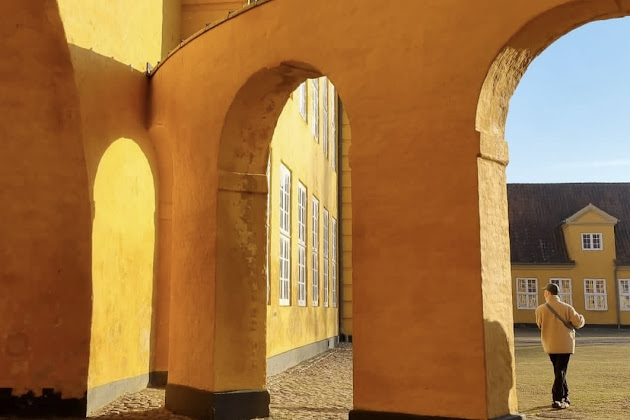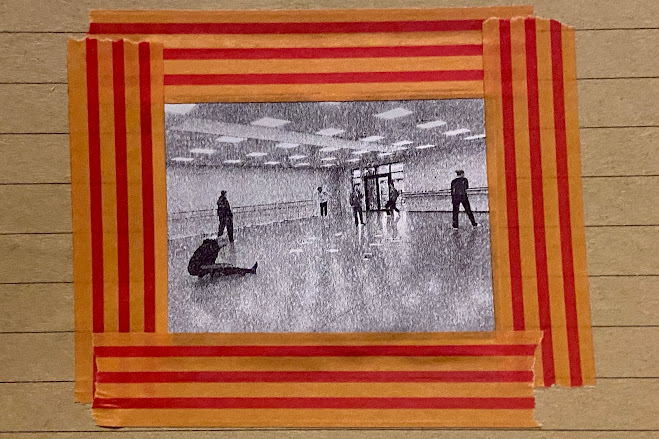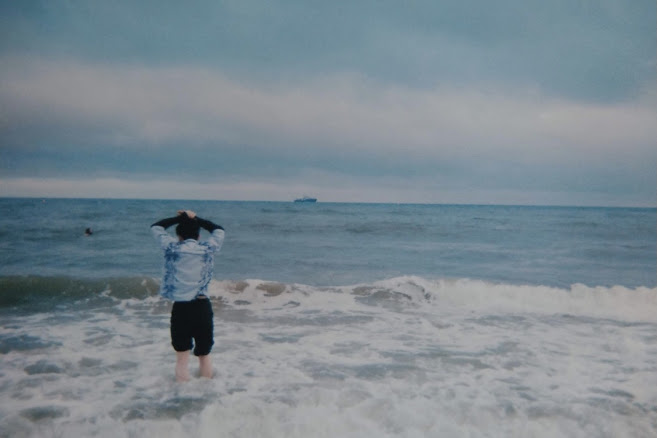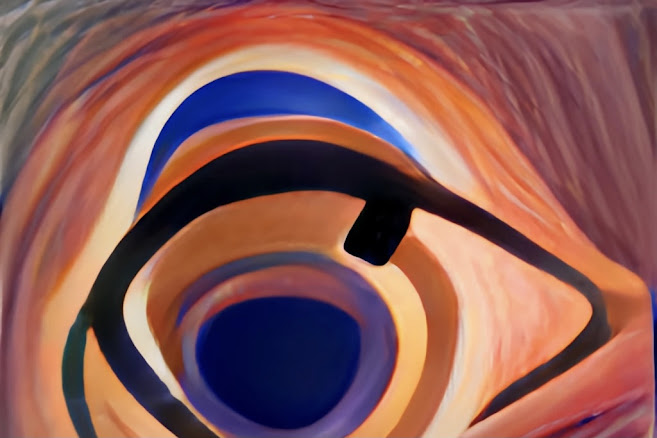I am a bit in my head at the minute. I am really trying to push myself to sit in the not knowing for longer, to gather more and soak it all in before acting upon it. Through the masters, I am discovering that my voice as a writer has a clear tone whereby the ongoing questioning and exploration is a process I am inviting the reader into. Not needing answers to questions, just using the process to ask better questions. (Maybe even asking worse questions to ask better questions?) I also discover that I benefit from constantly reorienting my questions:
I’m asking my books > I’m asking my body > I’m asking my history > I’m asking art > I’m asking my art > I’m asking my instinct > I’m asking my mum…
I come into this blog (and also sometimes the studio) to ask through producing, to ask through forcing myself to form things, but I become better at opening up to the vastness of what things is - and that feels integral.
I know very little about what my research will be, but I’m discovering some exciting components of how it will be. I was listening to Ruth Spencer and Jane McLean (Episode 4 of The Society for Dance Research’s Inclusion and Intersectionality Podcast Series) discussing their research with people with PMLD, central to their understanding is Joanna Grace’s work which identifies this group as sensory beings rather than linguistic beings - this requires the researcher to consider the sensory data which is present in their enquiry. I will not work with this group at this point in my Masters, but it is something that feels very important - to value, practice and research sensory data within whatever this thing will be. I can already see that this will require processing that data in a sensitive way - it is very important to me to not immediately transfer the sensory into the linguistic, but rather I am interested in finding a format which can sustain itself, so ideally the product of the research can be available in both linguistic and sensory formats (and hopefully I can discover nuance and blurriness within this dualism). I have been discovering some formats which are getting me extremely excited about how the collected data can come together - forms that currently feel rich include multi-sensory books. visual anthropology, audio-visual-sensory essays, sensory ethnography and art writing within critical contexts.
This is research in itself. It is research within research. The structure of the course seems to be perfect for this, especially when this research is centred around developing and complementing my practice. I would always consider breadth within any given audience of my work: asking who is being excluded by the choices we are making and whether or not we are okay with that. This process of doing research inclusively despite knowing that I will not (in this instance) work with people with PMLD is very exciting - this is, after all, the time to grow my practice and knowledge to develop possibilities for including more people in future structured research. It also allows me to make a statement about how much I value knowledge beyond the linguistic.
By creating a sensory essay, I am trying not only to do the research inclusively, but also to ensure that any findings or products can be presented in an inclusive way. There is an idealism to this endeavour, the specialist language and jargon that is incorporated into scholarship can be distancing - but it perhaps also reflects a realistic readership of academia. But I am also a maker - and I am making this research, as much as I will be making any subsequent theory, writing or findings around it. So, my gut tells me to scrutinise it under the same fundamental principles that inform my choreographic practice. When discussing this with Helen she identified agency and choice-making as key to the work, and those ideas do feel integral to my practice - if what I create now can give you the option to engage with it in a sensory or linguistic capacity (or a little bit of both) then I will be happy.
If I do find a way to collect sensory data, then I think it can be interesting but also challenging. Previous research I am looking into has used a variety of approaches to this, including:
-Stefanie Husel recording the laughter of an audience and using waveforms and transcripts to objectively analyse this data and find patterns (make meaning).
-Melaneia Warwick using wearable cameras to see from the participants perspective.
-Gry Worre Hallberg reading 800 notebooks and taking this as empirical data.
I can feel, in writing this blog, that I am sure of two things within this research.
1. I will collect linguistic and sensory data.
2. This will be presented in linguistic and sensory formats.
Perhaps something feels too polarised about this separation and I still have to think around what data and knowledge might be excluded from a data collection which priorities only sensory and linguistic sharing.
Does anything echo to any one else’s practice? I am sure it has interesting parallels to theory around embodiment and mind/body dualism - perhaps it even feels the same in some respects?
Have you come across anyone who is collecting sensory data or presenting scholarship in sensory formats? If so, please do share!
-
'treefingers' - radiohead, kid a, track 5




Hi Matthew,
ReplyDeleteThis sounds fascinating. I too am am trying to rest a bit longer in the place of unknowing. I am currently exploring the book 'Bodies of Thought' by Ian Burkitt which explores ideas of embodiment. It is fascinating and I highly recommend it. I am very much in a conflict between craving a really creative type of inquiry at the moment and also considering the pursuit of a line which I have been wanting to research for a while. I was thinking about the need which you outlined above for the findings to be represented in an inclusive way so that those with hearing impairment could access them and the challenges that might emerge from that. I have been involved in a number of choreographic projects where my work and role was audio described. This was fascinating I found, because when audio describing something I find I often notice many more details within a work, because it brings various aspects which you probably absorb unconsciously to the conscious mind. It seems to me that this way of approaching an enquiry could allow for a very rich and nourishing project.
Oooh thank you for the recommendation Ann! Yes, I wrote in one of my AOLs about audio describing work as I've always struggled to capture dance in this way. I made a show that was 6 hours long and we just couldn't audio describe for that length of time (because of money etc) so we created a podcast-kind-of-panel-discussion thing to talk about what things would look like or might look like alongside where things had come from and tried to shift between explaining the bigger pictures and the smaller details. It was an interesting process for discovering which words were adequate in facilitating an experience that we as a team felt invested in. Anyway, I would definitely like to explore this more, I think it could grow and be better...
DeleteI think you're right that it could be valuable and interesting within the framework of a research project (or just in the balance of textual, visual, sensorial in general).